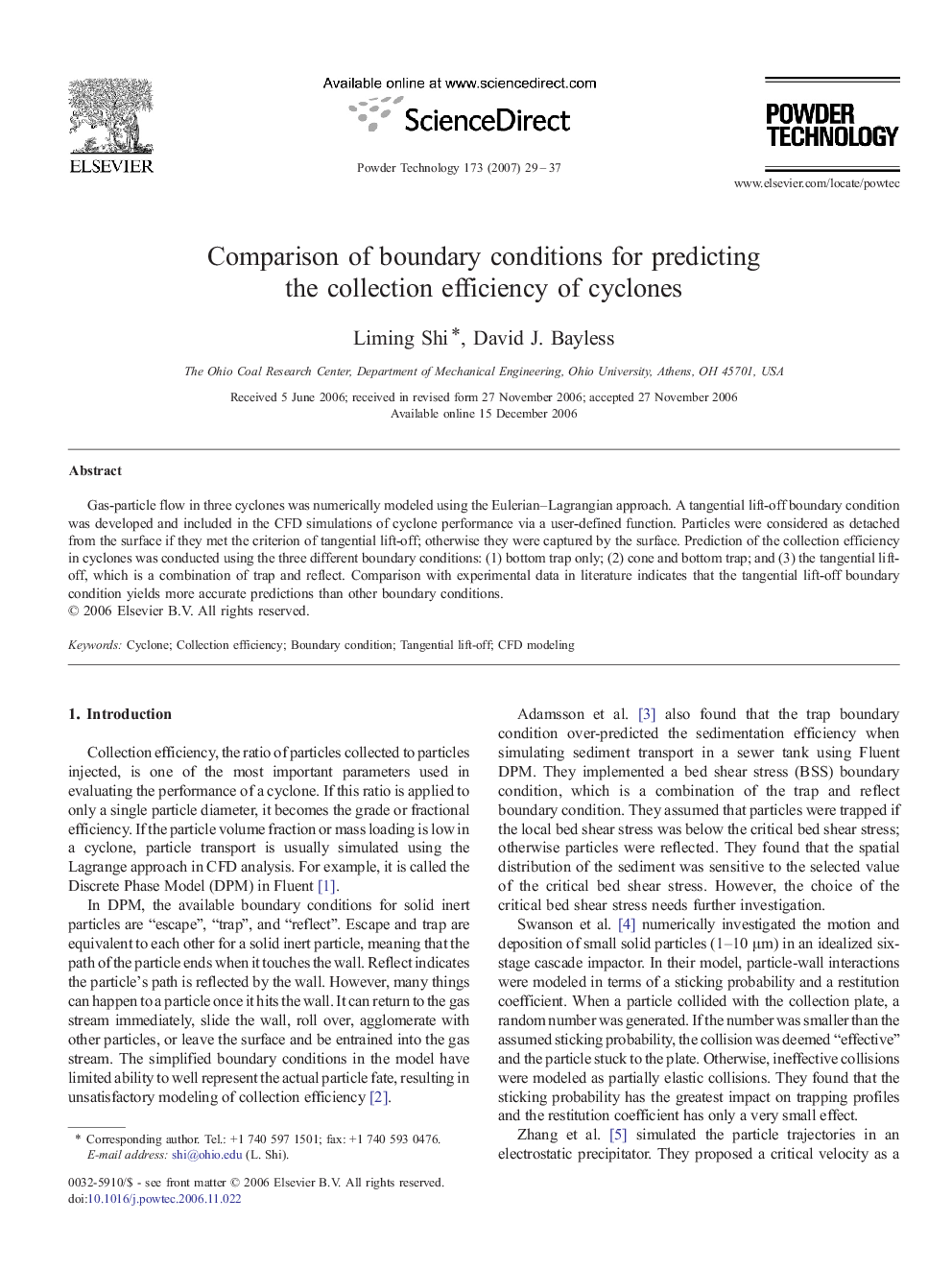| Article ID | Journal | Published Year | Pages | File Type |
|---|---|---|---|---|
| 239254 | Powder Technology | 2007 | 9 Pages |
Gas-particle flow in three cyclones was numerically modeled using the Eulerian–Lagrangian approach. A tangential lift-off boundary condition was developed and included in the CFD simulations of cyclone performance via a user-defined function. Particles were considered as detached from the surface if they met the criterion of tangential lift-off; otherwise they were captured by the surface. Prediction of the collection efficiency in cyclones was conducted using the three different boundary conditions: (1) bottom trap only; (2) cone and bottom trap; and (3) the tangential lift-off, which is a combination of trap and reflect. Comparison with experimental data in literature indicates that the tangential lift-off boundary condition yields more accurate predictions than other boundary conditions.
Graphical abstractThree different boundary conditions, (1) bottom trap only; (2) cone and bottom trap; and (3) the tangential lift-off, were used to numerically predict the collection efficiency of cyclones. The tangential lift-off boundary condition yields more accurate predictions than other boundary conditions after comparison with experimental data in literature.Figure optionsDownload full-size imageDownload as PowerPoint slide
